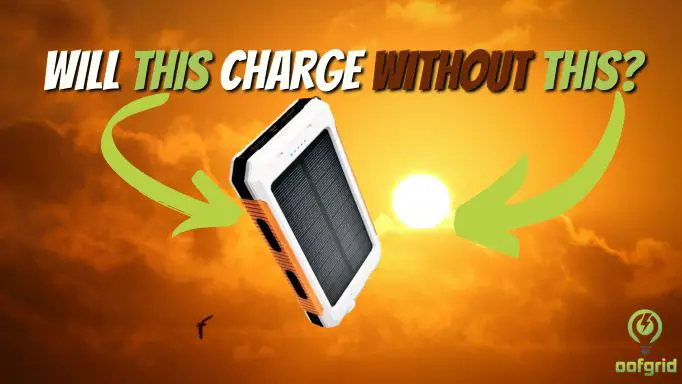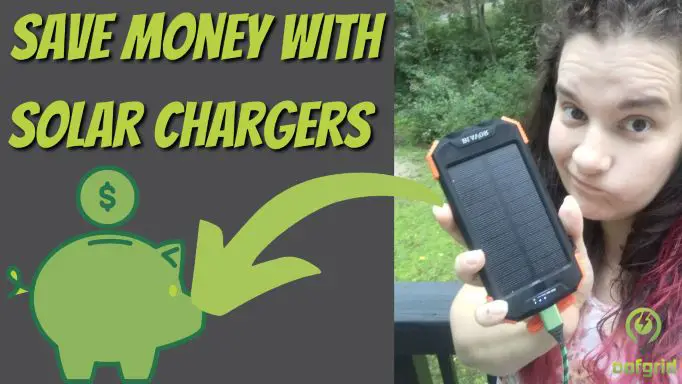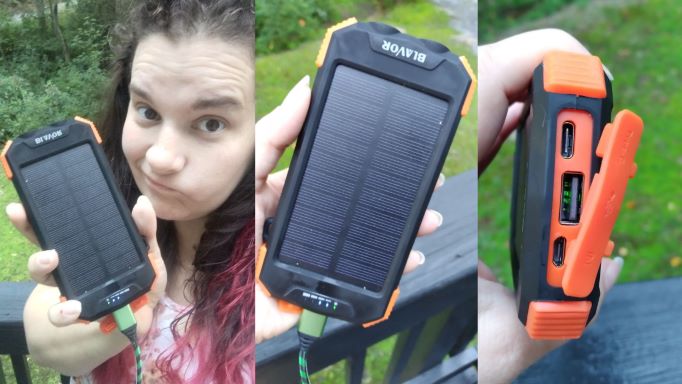Heading off into nature is something that a lot of us like to do.
Having a pop up camper gives you the freedom to explore the country without having to haul around a huge caravan but with the advantage of not having to pitch a tent.
You might say this accommodation gives you the best of both worlds.
However, just because you want to enjoy the great outdoors, that doesn’t mean that you should leave your creature comforts back at home.
Pop up campers have several devices that require battery power. Without it, you won’t be able to run your lights, fridge or any other appliance.
When you’re out in nature, the last thing you want is a battery that gives up and leaves you, quite literally, in the dark.
Fortunately, there are a lot of excellent batteries out there but as well as choosing the right one, it is also important to understand how to take care of your battery so that it gives you the best performance.
In this guide, we will detail everything you need to know!
In a hurry? The Powermall Deep cycle battery is perfect for Pop-up campers and RV. See the latest price on Amazon here.
Contents
Deep Cycle Batteries
You may have heard the term deep cycle battery especially if you have been researching the best battery for a pop up camper.
But at first thought, this can sound a little complex and even high-tech. But it isn’t, these batteries are everywhere, we just don’t realize it.
A deep cycle battery is designed to release a slow and steady amount of power over a much longer period of time.
They rely on a charge and discharge cycle and it is often recommended not to allow them to discharge by more than 80% at a maximum, if you want them to have a long lifespan.
This is because a deep cycle battery is designed to run over a certain number of cycles, although this will vary between batteries with some having an average of 300 cycles whereas others might withstand as many as 3000.
In any case, a deep cycle battery is the best choice for your pop up camper.
The reason for this is that it will deliver a slow amount of power over the course of your expedition and since they are designed to last a long time, you won’t need to worry too much about recharging.
That said, there is more than one type of deep cycle battery so it is essential to understand the difference.
Flooded Deep Cycle Batteries
Sometimes you will hear these being called wet batteries but they are all one of the same thing.
The flooded deep cycle battery is one of the most popular choices for a pop up camper as they won’t break the bank.
What’s more, they have a very good lifespan and so are ideal for people who want to go on regular camping adventures without the hassle of having to constantly replace their batteries.
Unlike other types of deep cycle battery, this one gives off oxygen and hydrogen. For this reason, they have ventilation caps to ensure safe use.
The battery should also be kept in the right position to avoid spillages so this is an important consideration.
Moreover, you should keep in mind that a flooded deep cycle battery is a little more high maintenance than other types.
But of course, with the lower price tag, this isn’t an issue for most people.
Lithium-Ion Deep Cycle Batteries
The lithium ion battery is perhaps one of the most popular batteries in modern times.
One of its greatest benefits is that it will offer one of the best performances of all types of battery.
They are able to store an incredible amount of power and slowly release this, making them perfect for pop up campers without the need to worry about charging them all the time.
What’s more, a lithium ion battery is lightweight and low maintenance.
They are easy to carry around and transport but what’s more important is that they are incredibly safe.
It isn’t very often that you hear of accidents occurring with this type of battery when compared to others.
The lithium ion battery is, however, a lot more costly than other types of battery but this is often not an issue for a lot of people owing to the durability and reliability of them.
If you are heading out on the road, you need something that you can depend on and a lithium-ion deep cycle battery will give you exactly that.
Not only will they run for a long time but they aren’t fussy about conditions.
Whether it is hot or cold, these batteries work well in more extreme temperatures.
Valve Regulated Deep Cycle Batteries
There are two main types of valve regulated deep cycle battery.
The first is the AGM battery which is generally considered to the safer option because it is sealed and so there is very little chance of any gases or toxins coming out while in use.
Moreover, they have a quick charging time so are a lot more convenient as well as being quite low maintenance so you won’t need to worry about any additional chores with them.
That said, the AGM battery can be easily damaged thanks to its delicate design so when you charge it, you must be incredibly careful not to go over the top.
As a rule of thumb, just a few hours of charging will get the job done and any more than this may cause damage and decrease the lifespan of your battery.
On the other hand, there is the gel valve regulated deep cycle battery. This works in a very similar way by contains, as its name may suggest, a gel that prevents spillages.
Much like the AGM battery, this one is delicate and must be charged correctly if you want it to last as long as possible.
When you use a gel valve regulated battery, you must make sure to use a slow charger because doing this too quickly will result in damage.
Choosing The Right Deep Cycle Battery
Of course, choosing between the different types of deep cycle battery is one thing, and there really is no right or wrong here. it vastly depend on what you are looking for; do you want a convenient and reliable battery that won’t let you down and you don’t mind how much that costs?
Then you’ll probably be better suited to a lithium-ion. If, on the other hand, you want something affordable then going for a flooded battery might be a better option.
But this is not the only thing you will need to think about when you choose your battery it certainly pays to do your research.

We have heard many horror stories from campers who have purchased a deep cycle battery on a whim only to find that it massively fails them on their camping trip.
And if you run out of power in the middle of the evening on a site with no hook ups, you’re in for a rough time.
| Image | Title | Buy |
|---|---|---|
 | Renogy Deep Cycle AGM Battery 12 Volt 100Ah | Latest Price on Amazon |
 | VMAX MR96-60 AGM 12V 60AH AGM Battery | Latest Price on Amazon |
 | Weize 12V 100AH Deep Cycle | Latest Price on Amazon |
 | Weize 12V 100AH Pure Gel Deep Cycle | Latest Price on Amazon |
 | Interstate Batteries 12V 35Ah | Latest Price on Amazon |
 | Powermall 12V 100AH | Latest Price on Amazon |
 | Vmaxtanks VMAXSLR125 AGM 12V 125Ah | Latest Price on Amazon |
 | Universal Power Group 12V 100Ah | Latest Price on Amazon |
Understanding Amp Hours
One of the first things you will notice when looking to buy a deep cycle battery is that there is a considerable amount of jargon and this can be confusing, especially if this is the first time you are buying this type of equipment.
But once you get your head around it, it’s not all that scary.
Before you buy a deep cycle battery, be sure that you understand exactly what it is you are getting by comparing the amp hours of each potential product.
Amp hours is a figure given in Ah and this is seen on all deep cycle batteries.
The amp hours of the battery will tell you how much power it can put out over the course of an hour before it will completely discharge.
Maybe a larger Portable Generator is needed?
Read our review here
The way that amp hours are measured is based on a 20 hour period; typically speaking, although this might not always be the case.
Let’s say you have a 100Ah battery that puts out 5 amps per hour over the course of 20 hours. This works because 20 x 5 = 100. It is very basic maths.
However, the numbers aren’t generally that simple. You will find that most deep cycle batteries designed for use in pop up campers have an amp hour rating between 70 and 85, based on the fact that it is a group 24 battery.
On the other hand, a slightly more powerful group 27 deep cycle battery may have an amp hour rating up to 105.
What Size Battery Should I Buy?
Now that we understand amp hours and how this rating affects the running time of the battery, it is important to think about the size battery you need.
If you are going to be running a lot of appliances during your camping trip then it makes sense to buy the biggest battery you can.
There is no point in risking running out of power, especially if you have no place to recharge.
When you look at deep cycle batteries for a pop up camper, you will find that they typically fall into one of three groups; 24, 27, and 31.
But it is no good simple buying the biggest battery from the highest group just to get more power because your pop up camper may not be equipped for this.
Most campers will come with a battery box that is designed to hold a certain group.
While it is possible to purchase a larger battery box, you must factor in this cost and if you’re not looking to spend a whole lot of money, it’s certainly something to think about.
Taking Care Of Your Pop Up Camper Battery
If you are going to get the best performance and longevity out of your deep cycle battery, it is crucial that you take good care of it.
These batteries, as we have already mentioned, are designed to run over a certain number of cycles but it is more than possible for them to give up long before this if they are not treated properly.
One of the first things you will need to think about is the type of charger you will be using. Each battery will require a specific type of charger and you can’t just use anything and hope to get away with it.
For example, if you are using an AGM battery, you will need to make sure that the charger has adjustable voltage set points.
Depending on the type of battery you are using, different levels of maintenance will be required. A flooded deep cycle battery will require topping up with distilled water; as a general rule, this will be every two to four weeks but it is important to judge the situation and top up accordingly.
You will also need to consider the state of charge which can be checked by using a refractometer or multi-meter, depending on the type of battery you are using.
It is recommended to do this every 90 days when the battery is not in use. Deep cycle batteries don’t tend to discharge quickly when they aren’t being used, but they will discharge at some point and if they lose all charge, this can cause irreparable damage.
Conclusion
There isn’t anything better than getting away from it all and enjoying what Mother Nature has to offer, but let’s not kid ourselves, we still need certain appliance if we are going to have a comfortable trip.
That’s where your pop-up camper battery comes in and saves the day. However, it is no good just choosing any old battery; you need a deep cycle battery that will last the duration of your trip.
There are several different types of deep cycle battery to choose from each with its own pros and cons. Moreover, it is essential that you take good care of the battery in order that you get the most out of it.








